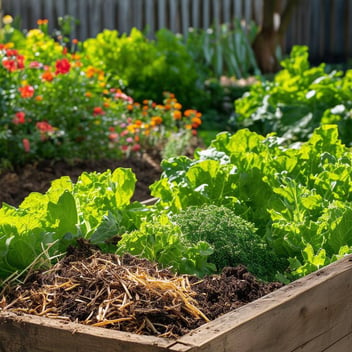Exploring Water Propagation in SEQ's Humid Climate
Introduction
South East Queensland (SEQ) boasts a humid subtropical climate, characterized by warm temperatures and abundant moisture. These conditions create an ideal environment for plant propagation, particularly through water-based methods. Water propagation offers gardeners a simple yet effective technique to expand their plant collections, leveraging the natural humidity to foster robust root development.
Understanding Water Propagation
Water propagation involves the initiation of root growth in plant cuttings submerged in water before transitioning them to soil. This method allows for close observation of root development and can be especially advantageous for species that root readily in aqueous environments. The transparency of the medium enables gardeners to monitor progress and address potential issues promptly.
Advantages of Water Propagation in Humid Climates
The inherent humidity of SEQ accelerates the rooting process in water propagation. High moisture levels reduce transpiration stress on cuttings, maintaining turgidity and promoting cellular activities essential for root initiation. Additionally, the warm ambient temperatures prevalent in the region synergize with humidity to create optimal conditions for root proliferation.
Ideal Plant Species for Water Propagation in SEQ
Several plant species thrive when propagated in water, particularly in SEQ's conducive climate:
-
Pothos (Epipremnum aureum): Renowned for its hardiness, pothos cuttings develop roots swiftly in water, making it a favorite among gardeners.
-
Philodendron: Various philodendron species adapt well to water propagation, with heartleaf philodendron being notably prolific.
-
Monstera deliciosa: Young stem cuttings of monstera root effectively in water, especially when ambient humidity is high.
-
Syngonium: Also known as arrowhead vine, syngonium cuttings exhibit vigorous root growth in aqueous settings.
-
Coleus: This vibrant foliage plant roots readily in water, allowing for easy multiplication.
These species not only root successfully in water but also acclimate well to SEQ's humid environment, ensuring seamless transition to soil.
Step-by-Step Guide to Water Propagation
-
Selection of Healthy Cuttings: Choose vigorous, disease-free stems with at least one node, as nodes are the sites of root emergence.
-
Preparation of Cuttings: Using sterilized scissors, make a clean cut below a node. Remove any leaves near the cut end to prevent decay in water.
-
Placement in Water: Submerge the cut end in a transparent container filled with room-temperature, chlorine-free water, ensuring nodes are submerged while leaves remain above the waterline.
-
Optimal Environmental Conditions: Position the container in a location with bright, indirect light. SEQ's natural humidity aids in maintaining turgor pressure, but indoor cuttings may benefit from additional humidity through misting or the use of a humidity dome.
-
Maintenance: Replace the water every few days to prevent stagnation and microbial growth. Observe the cuttings for signs of root development, which typically commence within one to two weeks.
-
Transition to Soil: Once roots reach a length of approximately 2-3 centimeters, transplant the cuttings into a well-draining potting mix. Continue to provide high humidity and indirect light to facilitate acclimatization.
Common Challenges and Solutions
While water propagation is generally straightforward, gardeners may encounter certain challenges:
-
Stem Rot: Prolonged submersion of leaves or inadequate water changes can lead to rot. Ensuring only stems are submerged and maintaining clean water mitigates this risk.
-
Algal Growth: Exposure to direct sunlight can promote algae proliferation in the water. Utilizing opaque containers or positioning them away from direct light can prevent this issue.
-
Delayed Rooting: Some species may exhibit slower root development. Patience is essential, and supplementing with rooting hormones can expedite the process.
Enhancing Success Rates in SEQ
To maximize the efficacy of water propagation in SEQ:
-
Utilize Rainwater: Collecting and using rainwater, which is free from chlorine and other chemicals, can enhance root health.
-
Leverage Natural Humidity: Taking cuttings during periods of high ambient humidity, such as early morning or after rainfall, can improve turgor and rooting success.
-
Monitor Temperature Fluctuations: While SEQ maintains warm temperatures, sudden drops, especially during seasonal transitions, can affect rooting. Keeping cuttings in a stable indoor environment can mitigate this risk.
Conclusion
Water propagation presents a viable and efficient method for plant multiplication, particularly well-suited to SEQ's humid climate. By selecting appropriate species and adhering to best practices, gardeners can expand their botanical collections with ease, contributing to the lush and diverse horticultural tapestry of the region.




